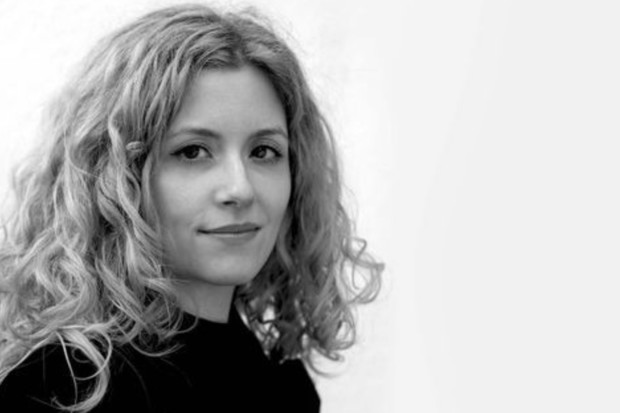Laura Ferrés • Director of The Permanent Picture
“I am not interested in making autobiographical films; I already spend enough time with myself”
by Teresa Vena
- The Catalonian director has crafted an experimental and genre-blending portrait of women from different generations

The first feature by Catalonian director Laura Ferrés has been shown in the international competition of this year's Locarno Film Festival. The Permanent Picture [+see also:
film review
trailer
interview: Laura Ferrés
film profile] was created with the help of a cast of non-professional, but still very impressive, actresses. We met up with the director and asked her about her approach, the social and historical context of her story, and how she depicts the passing of time.
Cineuropa: Why did you want to tell this story?
Laura Ferrés: The film tries to paint a portrait of the people who came from places in Spain like Andalusia to Catalonia to find work. It was a big demographic movement in the post-war era. This was also the case for my grandparents. I didn't know my grandfather, but I grew up with my grandmother. Like many people of her generation, she didn't like to talk about what had happened during the war or the time afterwards, but she sang. And through her songs, I learned about this context, since a lot of them were Republican songs. The situation of my protagonists is similar to that of my grandmother, but the film is fictional. It is meant as a reflection on the passing of time. Concretely, it’s about the idea of the eternal return, if everything repeats itself in a physical form. The film has a tragic dimension, but comedy is also very important in order to portray the absolutes of life. I wanted to mix anthropological aspects with the will to create a collection of images and symbols with its own rules, so that the elements of reality would be disguised as fiction.
On the topic of passing things down through the generations, why was it important to concentrate on female characters?
For many reasons. For example, the short film I made before was based on the life experiences of my father. It felt natural that after that, I would concentrate on female protagonists. Then, as I said, the starting point was inspired by my grandmother. Moreover, I work as a casting director for adverts, and I was getting tired of seeing women in fiction. This was an opportunity to show other kinds of women that we see in the streets but not on the screen. It was not only about the faces, but also about the accents. In the film, the characters speak standard Spanish as well as different accents from specific regions. I wanted to show the reality of normal people, which differs from what, for example, television in Spain imposes on us.
What did you include in the script about your relationship with your grandmother?
Her songs appear in the film, sung by someone else. It's a mixture of things based on real feelings and circumstances, and fiction. I am not interested in making autobiographical films; I already spend enough time with myself. I want to make films to be able to get to know someone else. So, I like to spend as much time as possible with the actors who play the roles. But it's quite normal that your own life reflects on what you write, and I spent five years on the project.
Why did you use the motif of photography?
I am a passionate photographer. When I found out that there was a moment when people used to take pictures trying to capture family portraits with their deceased family members, I found that fascinating. Photography and cinema have the ability to be witnesses to something. Therefore, I thought it was an interesting starting point to tell this story. In the film, there are a lot of permanent pictures – images that stay, that are echoes from the past, and that repeat themselves constantly. I wanted to use repetition to give the feeling of being in some kind of loop.
What does the banana symbolise?
The banana is an element that repeats itself. I am not sure if things have to be very clear in their intention or be left for the audience to interpret themselves. But roughly speaking, we could say that the banana at the beginning of the story is something that doesn't really exist, something longed for in a very poor social reality. Later, time passes, and it becomes something accessible. I guess it's true for the whole idea of the film: this process forms a life wished for, which gets more and more tangible. Sometimes ghosts and fantasies become real; sometimes they don’t.
How did you find your actresses?
It was a long process because we wanted people from the street. So we had to search in the right places. It was very much by chance that I met Rosario Ortega, who plays Antonia, in a bar, and Mara Luengo, who plays Carmen, at the vet.
Did you enjoy reading this article? Please subscribe to our newsletter to receive more stories like this directly in your inbox.















